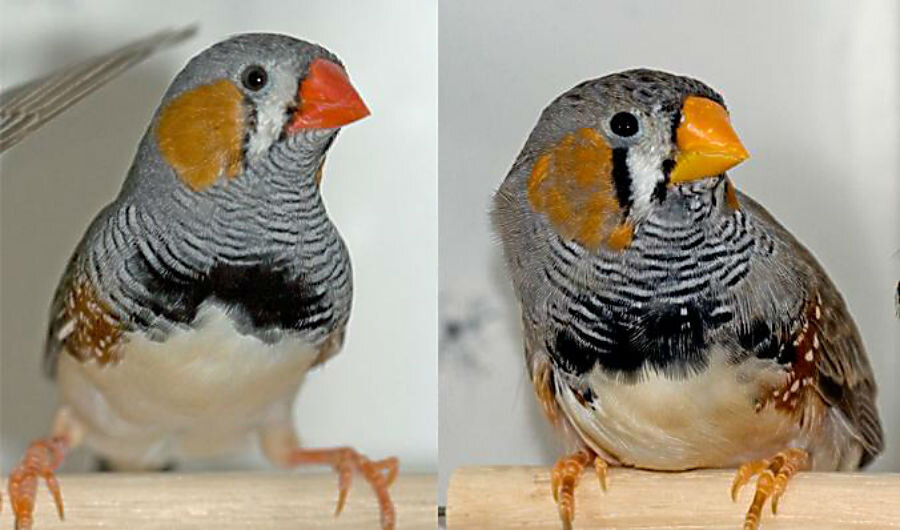How did some birds become red? Scientists unravel clues.
Where do some birds get their vibrant red colors? New has research identified a genetic enzyme in birds that converts yellow pigments from their food into red pigments applied to their bills, feathers, and skin. The color red is very important for birds, playing an active role in in mating, protection, and representation of genetic quality.
Two independent studies published in Current Biology each indicate the same gene is responsible for red pigmentation in birds. One of the studies – carried out by Ricardo Lopes, an evolutionary biologist at Portugal's Universidade do Porto; James Johnson, biochemist PhD candidate at Auburn University; and Matthew Toomey, a postdoctoral biologist at Washington University School of Medicine – compared domesticated yellow and red factor canaries. Bred nearly a century ago, red factor canaries are a cross between Serinus canaria, domesticated yellow canaries, and Spinus cucullata, wild red siskins.
"We discovered a gene that codes for an enzyme that enables this yellow-to-red conversion in birds," said the Universidade do Porto's Miguel Carneiro, who co-authored the study, which investigated the source of the "red factor" in canaries. "To produce red feathers, birds convert yellow dietary pigments known as carotenoids into red pigments and then deposit them in the feathers." Their study found CYP2J19, a cytochrome P450 enzyme on chromosome 8, to be responsible for red pigmentation.
The other study explored the genetics of domesticated wild-type and yellow-beaked zebra finches. Two groups carried out the study: one under the direction of Nicholas Mundy, evolutionary geneticist in the department of zoology at the University of Cambridge, and the other led by Jessica Stapley, evolutionary biologist in the department of animal and plant sciences at the University of Sheffield. The two research groups studied the genes of Taeniopygia guttata, domesticated zebra finches.
Birds such as zebra finches get carotenoids, or yellow pigments, from their food: seeds, in the case of the zebra finch, and insects for other bird species. Before the study, it had already been established that they convert carotenoids into ketocarotenoids, red pigments, but the process remained ambiguous.
"It was known that birds have an unusual ability to synthesize red ketocarotenoids from the yellow carotenoids that they obtain in their diet, but the enzyme, gene, or genes, and anatomical location have been obscure," said Mundy in a press release. "Our findings fill this gap and open up many future avenues for research on the evolution and ecology of red coloration in birds."
The study identified a group of three genes in wild finches that were missing or mutated in the same genetic region for "yellowbeak" birds. Like the aforementioned study, the genes in this study encode cytochrome P450s enzymes, which are essential in metabolizing toxic compounds.
"Red colour in birds is thought to signal individual genetic quality," according to the study. Red pigmentation is a sign of better genes, as it is useful in mating and self-defense. Red is often used to attract mates or warn rivals to stay away before a conflict ensues. Researchers also found that the red factor gene is also responsible for enhanced avian color vision.
"These findings suggest that nearly all birds have the latent capacity to make red feathers, but in order to actually do so, they must evolve the means of expressing [this gene] in the skin in addition to the retina," said Professor Joseph Corbo, researcher of retinal diseases at the Washington University School of Medicine.





